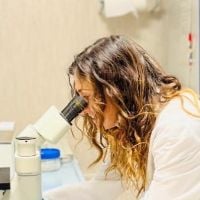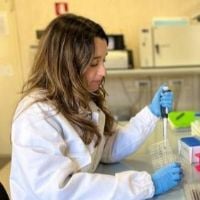Recent Advances in Neurological Diseases
A special issue of Biomolecules (ISSN 2218-273X). This special issue belongs to the section "Molecular Medicine".
Deadline for manuscript submissions: 30 June 2024 | Viewed by 4459
Special Issue Editors
2. NEST, Istituto Nanoscienze-CNR and Scuola Normale Superiore, Piazza San Silvestro 12, 56127 Pisa, Italy
Interests: pharmacology; molecular pharmacology; microRNA
Special Issues, Collections and Topics in MDPI journals
Interests: epileptic disease; neuropsychiatric comorbidities; neurodegenerative
Special Issue Information
Dear Colleagues,
Neurological and psychiatric disorders are among the most widespread noncommunicable diseases, affecting hundreds of millions of individuals worldwide.
Currently, more than six hundred diseases have been identified, including neurodegenerative diseases, cerebrovascular diseases, neuromuscular diseases, neurological diseases, and many others, such as epilepsy, multiple sclerosis, stroke, migraines, brain tumors, traumatic disorders, and neurodevelopmental disorders. As a result of these neurological disorders, neurodegeneration may occur, which may lead to cognitive impairments. Psychiatric diseases are also known to be associated with chronic neurological disorders.
The etiology and the clinical manifestation of these conditions are complex, and a reliable diagnostic tool and effective treatment remain as unmet medical needs.
In this regard, understanding the mechanisms underlying the pathogenesis of neurological and psychiatric disorders will confer a great opportunity to delineate therapeutic interventions and diagnostic biomarkers.
Researchers are invited to submit original research or review articles highlighting their advanced research that encompasses all neurological and psychiatric diseases for publication in this Special Issue in the journal Biomolecules. Especially welcome are articles examining novel molecular mechanisms from a diagnostic and therapeutic perspective and those focusing on restoring glial and neuronal activity or reducing neuroinflammation.
Dr. Sara Carpi
Dr. Antonio Leo
Dr. Ambra Del Grosso
Guest Editors
Manuscript Submission Information
Manuscripts should be submitted online at www.mdpi.com by registering and logging in to this website. Once you are registered, click here to go to the submission form. Manuscripts can be submitted until the deadline. All submissions that pass pre-check are peer-reviewed. Accepted papers will be published continuously in the journal (as soon as accepted) and will be listed together on the special issue website. Research articles, review articles as well as short communications are invited. For planned papers, a title and short abstract (about 100 words) can be sent to the Editorial Office for announcement on this website.
Submitted manuscripts should not have been published previously, nor be under consideration for publication elsewhere (except conference proceedings papers). All manuscripts are thoroughly refereed through a single-blind peer-review process. A guide for authors and other relevant information for submission of manuscripts is available on the Instructions for Authors page. Biomolecules is an international peer-reviewed open access monthly journal published by MDPI.
Please visit the Instructions for Authors page before submitting a manuscript. The Article Processing Charge (APC) for publication in this open access journal is 2700 CHF (Swiss Francs). Submitted papers should be well formatted and use good English. Authors may use MDPI's English editing service prior to publication or during author revisions.
Keywords
- neurological disorders
- neurodegeneration
- neuroinflammation
- myelin damage
- developmental disorders
- epilepsy
- neurodegenerative rare diseases
- neuromuscular diseases
- lipid storage diseases
- psychiatric diseases








